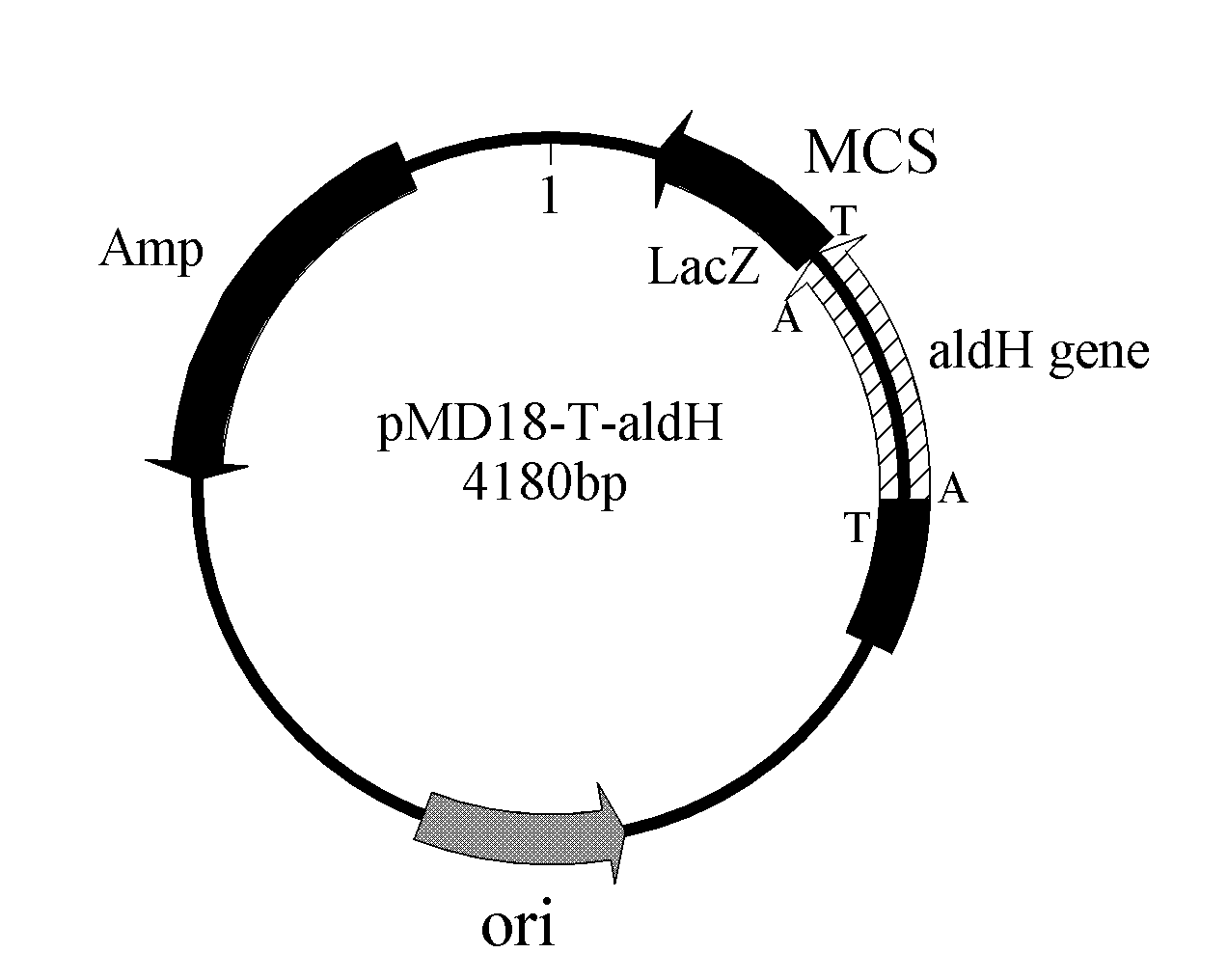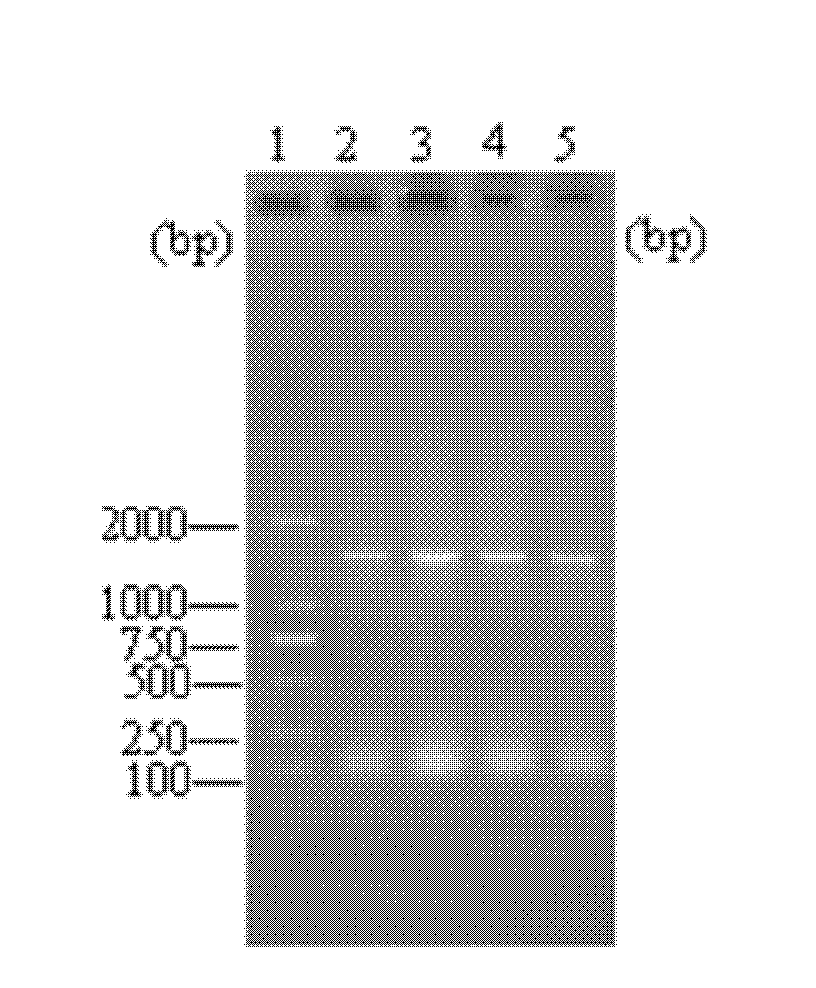Aldehyde dehydrogenase gene, vector, engineering bacteria and application thereof
A technology of genetically engineered bacteria and aldehyde dehydrogenase, which is applied in the field of preparation of recombinant aldehyde dehydrogenase, can solve the problems of restricting large-scale production and low activity of wild-type aldehyde dehydrogenase
- Summary
- Abstract
- Description
- Claims
- Application Information
AI Technical Summary
Problems solved by technology
Method used
Image
Examples
Embodiment 1
[0058] The total genomic DNA of Saccharomyces cerevisiae strain (China General Microorganism Collection and Management Center (Beijing), No. 2.1543) was extracted with a rapid nucleic acid extraction instrument, and the genomic DNA was used as a template to perform primer 1 (ATGTCACACCTTCCTATGACAGTGCC) and primer 2 ( GTCCAATTTGGCACGGACCGC) under the effect of PCR amplification. The amount of each component in the PCR reaction system (total volume 50 μL): 10×Pfu DNA Polymerase Buffer 5 μL, 10 mM dNTP mixture 1 μL (20 mM), cloning primer 1 and primer 2 each 1 μL (50 μM), genomic DNA 1 μL, Pfu DNA Polymerase 1 μL, no Nucleic acid water 40μL. Using Biorad’s PCR instrument, the PCR reaction conditions are: pre-denaturation at 94°C for 5 minutes, then enter the temperature cycle at 94°C for 30s, 55°C for 1.5min, and 72°C for 2min, a total of 35 cycles, and finally extend at 72°C for 10min, and the termination temperature is 8°C . Take 5 μL and detect it by 0.9% agarose gel electro...
Embodiment 2
[0060] Expression primer 3 and primer 4 were designed according to the analysis results of Example 1, and Sal I and Hind III restriction enzyme sites were introduced into primer 3 and primer 4 respectively. In primer 3 (GTT GTC GAC TCACACCTTCCTATGACAGTGCC, the underlined part is the Sal I restriction site) and primer 4 (GTT AAGCTT Under the trigger of GTCCAATTTGGCACGGACCGC, the underlined part is the Hind III restriction site), the high-fidelity Pyrobest DNA polymerase was used to amplify to obtain a 1488bp aldehyde dehydrogenase gene fragment (SEQ ID NO: 1), which was sequenced using Sal The amplified fragment was treated with I and Hind III restriction enzymes, and the fragment was ligated with the expression vector pET28b treated with the same restriction endonuclease by T4 DNA ligase to construct the expression vector pET28b-aldH. The constructed expression vector pET28b-aldH was electrotransformed into Escherichia coli BL21, spread on a plate and cultured at 37°C overni...
Embodiment 3
[0062] The recombinant Escherichia coli BL21 / pET28b-aldH containing the expression recombinant plasmid pET28b-aldH verified in Example 2 was cultured with LB liquid medium containing 50 μg / ml kanamycin resistance for 12 hours, and then inoculated with 1% inoculum to In fresh LB liquid medium containing 50 μg / ml kanamycin resistance, cultivate to the cell concentration OD 600 About 0.6, then add IPTG with a final concentration of 0.5mM to the LB liquid medium, induce culture for 8 hours, centrifuge at 4°C and 9000rpm for 8 minutes, and collect the bacterial cells containing the recombinant aldehyde dehydrogenase.
PUM
 Login to View More
Login to View More Abstract
Description
Claims
Application Information
 Login to View More
Login to View More - R&D
- Intellectual Property
- Life Sciences
- Materials
- Tech Scout
- Unparalleled Data Quality
- Higher Quality Content
- 60% Fewer Hallucinations
Browse by: Latest US Patents, China's latest patents, Technical Efficacy Thesaurus, Application Domain, Technology Topic, Popular Technical Reports.
© 2025 PatSnap. All rights reserved.Legal|Privacy policy|Modern Slavery Act Transparency Statement|Sitemap|About US| Contact US: help@patsnap.com



